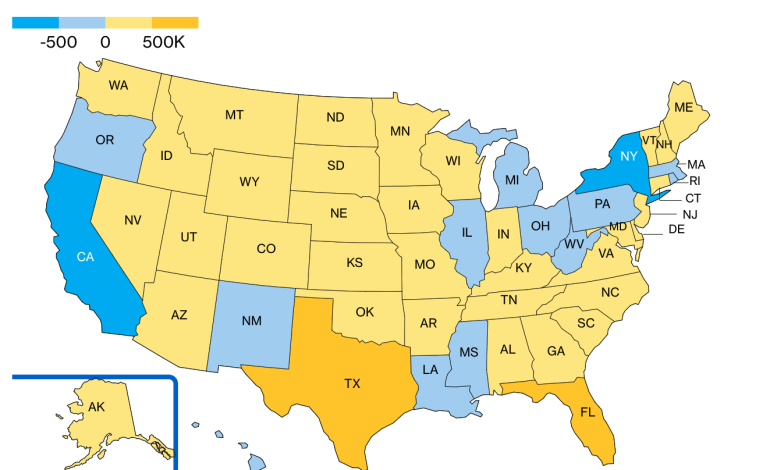The Hispanic population in the United States experienced a dramatic surge, growing by 3.2 million between the start of the pandemic and mid-2023. This remarkable growth accounts for a staggering 91% of the country’s overall population gain during this period, according to an analysis of Census Bureau data, Bloomberg reports.
An uptick in immigration alongside shifts in both births and deaths from April 2020 to July 2023 has contributed to a “diversity explosion,” according to William Frey, a demographer and senior fellow at the Brookings Institution. The trend represents an important part of the nation’s future, he said in a report, and “a phenomenon that American policies and politics need to recognize.”
Overall, the US population increased by 3.4 million over the period, Frey’s analysis showed. At the same time, the White population declined by 2.1 million, and the shrinking group of White youth drove a 1.6 million drop in the number of Americans under the age of 18.
The smaller White population is mostly the result of more deaths than births. Due to an aging population, there are proportionately fewer White women who are of childbearing age and fertility rates are lower compared to other groups.
Both natural increase — measured as births minus deaths — and immigration contributed to the recent gains of all other groups.
Looking ahead, Hispanic and other nonwhite groups are projected to make up 44% of the population in 2030, with Hispanic residents comprising one fifth of the total. By 2050, one-quarter of the population will be Hispanic residents and more than half will be nonwhite groups.
Overall, 15 states saw a decline in population, led by California and New York, which lost a combined 1.2 million residents during the three-year period.
The vast majority of states saw their youth population decline. In California there are close to 500,000 fewer children than pre-pandemic, and New York has 272,000 fewer. Meanwhile, Florida and Texas each gained about 100,000 young people.
The population shrank in six of the 15 largest metro areas. The New York City metro area had the biggest overall drop, with fewer White, Black and Hispanic people, while the population of Asians and people of two or more races increased.
The evolving racial makeup of the nation will likely reshape local politics, as various racial coalitions gain or lose strength, with voting patterns often reflecting racial lines, according to Frey.
Furthermore, Frey stressed the critical importance of successfully integrating the increasingly multiracial population to maintain and enhance the nation’s labor force productivity and overall economic well-being.









